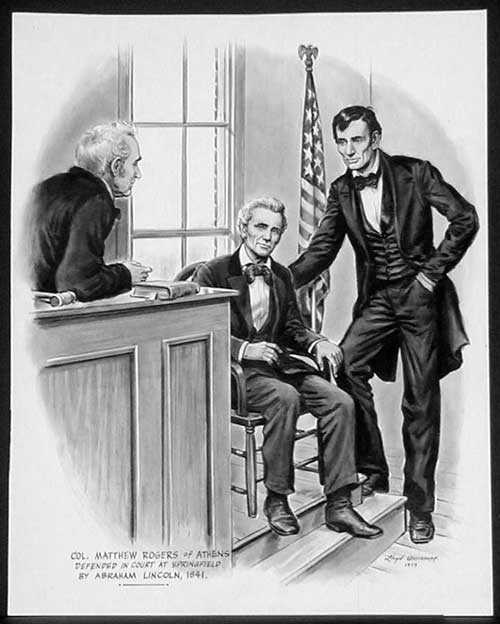
John Hochfelder, guru on the value of injuries as defined by New York appellate courts
It’s now happened to me three times in three months. There I was at John Hochfelder’s New York Injury Cases Blog doing research on damages, before I turned to the usual suspects of Westlaw or the New York Jury Verdict Reporter.
This posting isn’t just about Hochfelder’s blog, but also about how useful blogs can be as primary research tools, even as the New York Times discusses a decline in blogging in some sectors.
First let’s talk Hochfelder. He started his blog in December 2008, dedicated to filling a void in appellate law. He saw many decisions come regarding the excessiveness or inadequacy of jury awards, but these decisions were often empty of an actual analysis of the injuries. This made it virtually impossible to determine why the appellate court sustained or stuck the jury award, and therefore useless to cite for future litigants looking for similar cases. Yet those decisions form the heart of how our judiciary sets both minimum and maximum caps on damages.
Hochfelder has often railed against the appellate judiciary on this issue. Back in March 2009 he wrote about one case where a $2.6M verdict was reduced to $1.35M without explanation:
Failing to give the public facts upon which appellate courts reach their decisions as to pain and suffering damages is unfair both to the lawyers who rely upon the appellate court decisions for precedent and to non-lawyer citizens (by whose tax dollars, after all, the judges are hired and paid). We are all entitled to know how these august bodies make their decisions.
So Hochfelder does an analysis of those decisions by pulling appellate briefs, talking with the lawyers involved to get background information, and using illustrations to show the reader what, for instance, a torn ACL might actually look like. He may also supplement with lower court rulings, some of which are unpublished.
Then he drops them into neat categories in the sidebar. Want to know what the courts have done with other knee injuries? Presto, you have the decisions, briefs, illustrations and often the inside poop on what really happened from the lawyers involved. A quick look at the knee injury category and you will see what I mean.
Contrast that with blogs such as mine that dwell on analysis of stories in the news (ex: Bloomberg on tort reform) or differing types of appellate decisions (ex: “elective” amputation, $1M loss of consortium claim). Sometimes a blog such as this can break news (ex: Dominic Barbara, Takara Davis). But breaking news is a one-off type of thing, since most law bloggers have real jobs where we spend our time. Other times we may comment on people in the news related to law suits (ex: John Ritter, Dennis Quaid) or discuss political issues (ex: Will Congress support the constitution when it comes to tort reform?).
Hochfelder, however, has for two years been quietly and steadily building a database of cases and more cases, leaving aside popular stories that oft times generate inbound links, in favor of analyzing scores upon scores of New York injury cases. And because he stays faithful to his niche, finding exactly the kind of information you need, assuming such information exists, is easier on his site than anywhere else.
And this isn’t just my opinion. For after I found myself repeatedly returning to use the blog, I asked other New York PI lawyers if they were also using it. And they have. Let’s look at four responses before turning to the larger issue of blogs:
This response from David Roth mirrors my own thoughts:
The blog focuses on those things which are important to me in looking behind the mere reports and goes into detail about the basis for the numbers that are awarded or sustained. I have used it to explain injuries and compare the amounts awarded at trial to the amounts that the Appellate division reduced or sustained.
It differs from west and lexis in that it has information in an easily searchable format with pictures, diagrams and information that goes beyond the decisions. Often there are quotes from briefs which are intuitive to a personal injury lawyers needs, which saves me time from having to figure it out myself. The jury verdict reporter does not concentrate on sustainable numbers. The blog gets me the info I need without forcing me to do the extra research.
And attorney Steve Skor says:
We have used it to great effect on several high end negotiations. Judge [George] Silver was very impressed recently by a presentation we created relying heavily on the blog in a case. Helped get what I considered to be a very big settlement on an ankle fracture case with serious “issues.” The adjuster constantly looked at defense counsel as to say “Where is your authority to refute plaintiff’s numbers,” every time they said we were too high. A great resource.
From Stephen Frankel:
I’m on it at least once or twice a week. The blog saves a huge amount of time and gives excellent direction with respect to P&S values….Hochs blog is the best in NYS for valuing injuries and it is quite simply a fantastic research tool.
And one more, from Howard Trepp, before I turn to the essential point of this posting:
The Hoch blog is the first place to look for information on the value placed on injuries in the courts of the state of new York. Well organized, it is the most comprehensive source available to determine what the new York appellate courts deem fair and reasonable compensation for personal injuries.
Now on to the larger point. There are some people who think the legal blogosphere is saturated, and really can’t tolerate more. Not so. While there may be too many faux blogs that blast news of the latest car accident or DUI in the hopes the people involved will hire them (which is of questionable ethics), there is always room for more quality content. Just because the ABA Journal lists 3,000 law blogs doesn’t mean all of them are good. Or current.
Looking at my own niche, I know that I write only 1 out every 5-10 pieces I would like to write. It isn’t for lack of interest, but lack of time. Now magnify that by all the different practice areas and all the different states. What is lacking, of course, is finding more Hochfelders who can figure out how to organize the data into useful searchable form, and put in the time to do it. The resource is valuable because it is hard data, not an accumulation of Twitter followers following a one-breath statement. That makes the blog not just a valuable resource, but a primary resource because it is better than what existed previously.
In the New York Times on February 21st, there was an article on the decline of blogging due to Facebook and Twitter (Blogs Wane as the Young Drift to Sites Like Twitter). But the decline comes from those who had previously used blogs as online diaries for purely social purposes. There are other forms of social media that may be better for letting friends know of your vacation pictures and weight loss successes.
But for professionals, blogs rule the roost and will for some time to come. And that is because readers often come from outside the circle of pre-approved “friends” or followers who may want to see the information. Facebook and Twitter may be fine for letting others know that you have a new blog post, but for professionals who blog they are no substitute.
So the legal blogosphere is, I think, still wide open to newcomers and receptive to quality sites. Hochfelder found his due to appellate failure. Ironcially, it is that appellate failure that may be preventing cases from settling. As Hochfelder explains, in one of the many cases where he takes the appellate courts to task:
The point is, though, that we are owed some guidance from the appeals courts, some justification for their decisions involving millions of dollars and we are more and more often getting no explanation at all. In my humble opinion, that’s got to change if the appeals courts want the bar and the public, as well as the parties before it, to be guided by their opinions and to act on them in a manner (i.e., settling cases for reasonable amounts) that will reduce the number of lawsuits brought to trial and appealed.
So to those who may be contemplating a new blog, and worried that the field is filled and all the good subjects covered, I say that you couldn’t be more wrong. If you write and analyze well, there is more than enough room for you. And if you know your stuff you may find, as Hochfelder has, people regularly turning to you for advice.
Elsewhere: An October 2009 Q&A with Hochfelder
And, regarding the same NYT story: Blogging ain’t dying among lawyers (Real Lawyers Have Blogs)




